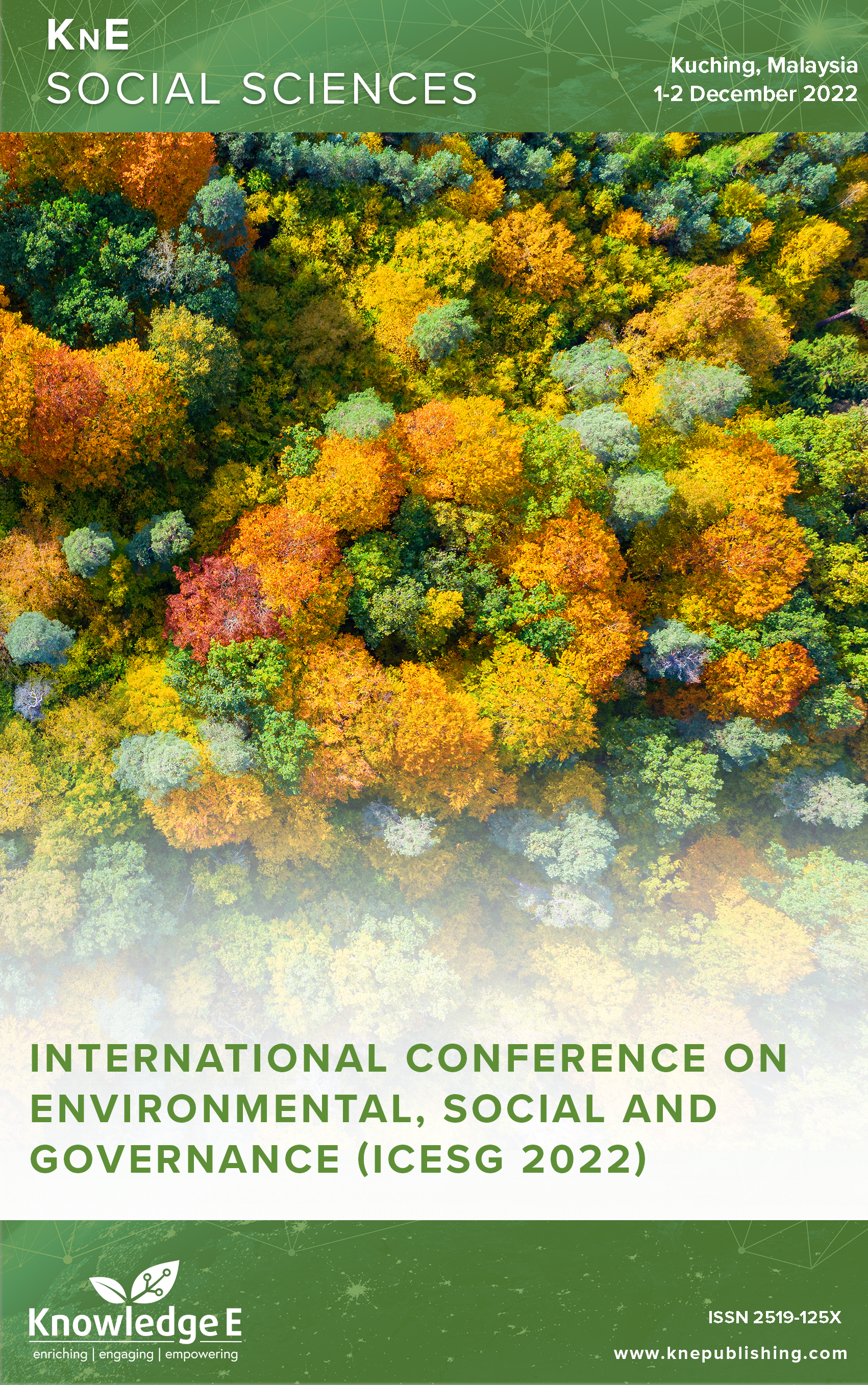Unraveling Farmers' Purchasing Behavior of Solar Water Pumps Using the Theory of Planned Behavior
DOI:
https://doi.org/10.18502/kss.v8i20.14638Abstract
India is an agricultural country with hottest temperature and moderate humidity, where it is believed that some states receive the maximum solar energy, one of them is the state of Rajasthan. The need for power has expanded over the past few decades’ which is leading to significant increase in environmental degradation as even today, more than 70% of energy needs is fulfilled from fossil fuels. Higher dependence is resulting in higher cost and environmental degradation. Implementing solar pumps cannot only help us to overcome energy deficits but also increase agricultural productivity which help us to reduce pollution produced by thermal and diesel sources. The present study is based on first-hand information gathered from 498 farmers from five blocks of rural region of Rajasthan (India). To understand the factors influencing the behavior of farmers towards green technologies, theory of planned behavior model has been applied. Data were collected using questionnaire/schedules, the sample size was chosen using convenience sampling, and were then examined further using SPSS and AMOS. In order to understand the elements of the TPB model and predict farmers’ behavioral intention towards adoption of solar water pumps, confirmatory factor analysis (CFA) and structural equation modelling (SEM) were applied in the study. The proposed research fills in the gap in the literature by performing an empirical study on farmer’s adoption behavior and offering insight about variables influencing farmers purchase intention and behavior of farmers towards solar water pump. Results from the study will be more useful to the policy makers to design effective strategies in order to achieve energy sufficiency without adversely affecting the environment.
Keywords: carbon emission, agriculture, irrigation, solar water pump, TPB model, sustainable development.
References
[2] V, V. (2019). Solar powered smart irrigation system. 4(4), 341–346. https://doi.org/10.31227/osf.io/s5t72.
[3] Kumar, V., Syan, A. S., Kaur, A., & Hundal, B. S. (2020). Determinants of farmers ’ decision to adopt solar powered pumps. July. https://doi.org/10.1108/IJESM-04-2019- 0022
[4] Shim HS. (2017). Solar-Powered Irrigation Pumps in India — Capital Subsidy Policies and the Water-Energy Efficiency Nexus. Global Green Growth Institute. http://www.greengrowthknowledge.org/sites/default/files/downloads/bestpractices/ GGGICaseStudy_Solar-PoweredIrrigationPumpsinIndia_June2017.pdf
[5] Sharma DK, Singh AP, Verma V. A Review of Solar Energy: Potential, Status, Targets and Challenges in Rajasthan. Int J Eng Res Technol (Ahmedabad). 2014;3(3):606–9.
[6] Kaur R, Pandey P. Air Pollution, Climate Change, and Human Health in Indian Cities: A Brief Review. Frontiers in Sustainable Cities. 2021;3(August):705131.
[7] Paliwal H, Dave V. Renewable Energy Sources in Rajasthan for Sustainable Development. IOP Conf Ser Earth Environ Sci. 2021;785(1):012007.
[8] Gupta, E. (2019). The impact of solar water pumps on energy-water-food nexus: Evidence from Rajasthan, India. Energy Policy, 129(August 2018), 598–609. https://doi.org/10.1016/j.enpol.2019.02.008.
[9] Sprinkler M. (2010). Solar Water Pump Programme Provides More Avenue For Income Introduction : - Impact : - Vision : Objectives / goals : V, V. (2019). Solar powered smart irrigation system. 4(4), 341–346. https://doi.org/10.31227/osf.io/s5t72.
[10] Kumar, V., Syan, A. S., Kaur, A., & Hundal, B. S. (2020). Determinants of farmers ’ decision to adopt solar powered pumps. July. https://doi.org/10.1108/IJESM-04-2019- 0022.
[11] Yazdanpanah M, Komendantova N, Shirazi ZN, Bayer JL. Green or in between? Examining youth perceptions of renewable energy in Iran. Energy Res Soc Sci. 2015;8:78–85.
[12] Masukujjaman M, Alam SS, Siwar C, Halim SA. Purchase intention of renewable energy technology in rural areas in Bangladesh: empirical evidence. Renew Energy. 2021;170:639–51.
[13] Nam H, Giao K. FACTORS INFLUENCING PURCHASING DECISION OF. 1–10. onurlubaş, ebru. (2017). Knowledge Levels of the Consumers About Eco-Friendly Products. The Journal of International Scientific Researches. 2020;( January):11–8.
[14] Shukla S. A Study on Millennial Purchase Intention of Green Products in India : Applying Extended Theory of Planned Behavior Model A Study on Millennial Purchase Intention of Green. J Asia-Pac Bus. 2019;20(04):1–29.
[15] Halder P, Pietarinen J, Havu-Nuutinen S, Pöllänen S, Pelkonen P. The Theory of Planned Behavior model and students’ intentions to use bioenergy: A cross-cultural perspective. Renew Energy. 2016;89:627–35.
[16] Rezaei R, Ghofranfarid M. Rural households’ renewable energy usage intention in Iran: extending the unified theory of acceptance and use of technology. Renew Energy. 2018;122:382–91.
[17] Africa S. Factors Influencing The Purchase Of Energy-Efficient Appliances By Young Consumers In South Africa Olawale Fatoki. 2020;12:151–66.
[18] Halder P, Pietarinen J, Havu-Nuutinen S, Pöllänen S, Pelkonen P. The Theory of Planned Behavior model and students’ intentions to use bioenergy: A cross-cultural perspective. Renew Energy. 2016;89:627–35.
[19] Chen IJ. Using The Theory Of Planned Behavior To Understand In-Service Kindergarten Teachers Behavior To Enroll In A Graduate Level Academic Program [TLC]. J Coll Teach Learn. 2007;4(11):13–8.
[20] Kumar, A., & Godara, A. K. (2017). Attitude of farmers ’ towards Photovoltaic Water Pumping System in Haryana. 1–5.
[21] Si, H., Shi, J., Tang, D., Wu, G., & Lan, J. (2020). Resources, Conservation & Recycling Understanding intention and behavior toward sustainable usage of bike sharing by extending the theory of planned behavior. Resources, Conservation & Recycling, 152(September 2019), 104513. https://doi.org/10.1016/j.resconrec.2019.104513.
[22] Waris, I., & Ahmed, W. (2020). Empirical evaluation of the antecedents of energyefficient home appliances : application of extended theory of planned behavior. 31(4), 915–930. https://doi.org/10.1108/MEQ-01-2020-0001.
[23] Singh RK, Dwivedi BS, Singh A, Tripathy S (2014). Farmers’ knowledge and creativity in eco-friendly pest management: lessons in sustainable agriculture. Indian J Tradit Knowl. 2014;13(3):574–81.
[24] Mohanty PK, Patro A, Harindranath RM, Senthil Kumar N, Panda DK, Dubey R. Perceived government initiatives: scale development, validation and impact on consumers’ pro-environmental behaviour. Energy Policy. 2021;158(September):112534.
[25] Ajzen, I. The theory of planned behavior: Frequently asked questions. Hum Behav & Emerg Tech. 2020; 2: 314–324. https://doi.org/10.1002/hbe2.195
[26] Gaskin, James, Lowry, Paul, Partial Least Squares (PLS) Structural Equation Modeling (SEM) for Building and Testing Behavioral Causal Theory: When to Choose It and How to Use It, Doi - 10.1109/TPC.2014.2312452

